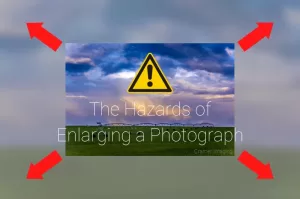How Do I Insure My Fine Art?
Shop

- Why You Should Insure Your Fine Art
- What Kinds of Art Should I Insure?
- How Do I Insure My Fine Art?
So, here’s the big question we’ve been leading up to for the past 2 weeks. How do I insure my fine art? Since we know that it’s important and what we can insure, how do we go about doing so and saving our monetary investment from the ravages of life? Today, we’re tackling the question of insuring fine art head on for all of you art fans out there.
To start off, we really couldn’t have started with this article without the help of an insurance agent. We’ve never had any fine art which we considered insuring. We decorate using my fine art photography and I give myself the employee discount there. Well, thanks to insurance agent Marc Johnson from Marc Johnson Agency in Pocatello, we got a decent idea of what you need to do when you want to insure your fine art.
Step 1. The Insurance Company
 Firstly, you need to know is that all insurance companies have different definitions of what they will and won’t work with. They have value thresholds which you must consider in making your decision. They have rates which you should compare. Each insurance company is different. So, you must consult your own insurance agent for the exact details of how to insure your art with their company.
Firstly, you need to know is that all insurance companies have different definitions of what they will and won’t work with. They have value thresholds which you must consider in making your decision. They have rates which you should compare. Each insurance company is different. So, you must consult your own insurance agent for the exact details of how to insure your art with their company.
That being said, there are a few things which you can do beforehand. These suggestions will make your life easier when looking to insure your fine art. The first is to research out what you can about your insurance company.
Check out the literature you’ve been given. Read up online. Get price quotes from them. Also, read and reread your insurance policy contract to see what is covered there. It’s always better to go in armed with information than it is to go in blind.
Step 2. The Art
 Next, consider the value of the art you wish to insure. Most home-owners’ insurance policies will cover a certain amount of art already. How much will depend upon your policy and the company offering it. It can be as little as $500 total for art or as high as $2000 for art. If the total value of your fine art collection isn’t valued much beyond that general range, you’ll probably be covered with your home-owners’ insurance policy just fine and not require additional insurance. For most people, and most art, this is enough.
Next, consider the value of the art you wish to insure. Most home-owners’ insurance policies will cover a certain amount of art already. How much will depend upon your policy and the company offering it. It can be as little as $500 total for art or as high as $2000 for art. If the total value of your fine art collection isn’t valued much beyond that general range, you’ll probably be covered with your home-owners’ insurance policy just fine and not require additional insurance. For most people, and most art, this is enough.
If you find that you have 1 or more pieces of art which exceed that general ballpark value, then you can consider getting a separate policy for the art itself. Insurance companies will happily help you out with putting together a policy like this if they feel it would be worth your time and your money to do so. Talk to your insurance agent to begin.
Now, if you feel that you need a separate insurance policy for your fine art, there’s a few steps you need to complete. The first is that you must hire a professional appraiser in the fine art world to appraise the piece. The insurance company will not take your word for the art’s value nor should they trust some random person saying that the art you wish to insure is worth 10 million dollars.
Step 3. The Appraisal
 You need your art to be properly appraised so you can submit that appraisal to the insurance company. Should something happen to your art, this evaluation might be the value which the insurance company compensates you with.
You need your art to be properly appraised so you can submit that appraisal to the insurance company. Should something happen to your art, this evaluation might be the value which the insurance company compensates you with.
Just because you’ve acquired a professional art appraisal does not give you an automatic insurance policy. The company must review and approve the appraisal. They want to make sure that the appraiser isn’t trying to cheat them. They will do some research and they will approve or not approve the appraisal.
If you would like to increase the chances of your art appraisal being accepted, then do your research and choose a reputable appraiser to do the appraisal. The better the reputation of the appraiser, the better your chances of quick approval on the appraisal.
Step 4. The Submission
The next thing you must do is to submit photos of the art you wish insured. If something happens to the art, you need to prove what condition it was in before the damage or destruction took place. Multiple angles and close-up shots will help in this area.
In the case of wall art, you probably must provide pictures of how you are hanging the art on the wall. The company want to see security hangers to help prevent theft. For other kinds of art, they will want to see where you keep your art. This includes a safe. They need to know what kind of security you are using to protect your art from damage, destruction, and theft.
Additional Considerations
Another thing to consider about insuring your fine art is insurance company expectations. Take this one for example: the insurance company expects that you will keep the art stored in your home, or place of business, as listed on the policy for a minimum of 75% of the time. They will likely grant an exception for an art walk or other art exhibition display or a short term display in a museum without any issue. They want to protect their investment in your art just as much as you do.
Conclusion
Sadly, unlike other parts of buying fine art, insuring your fine art isn’t as easy as it sounds. It’s important but it isn’t easy. You will need help from an insurance agent to make the best possible decision you can to protect your fine art from damage and loss. It may be a headache. However, it’ll be worth knowing that you don’t have to suffer financially from the poor choices of others around your fine art.
Best Sellers
Cramer Imaging Newsletter

Receive monthly updates in your inbox from us.








